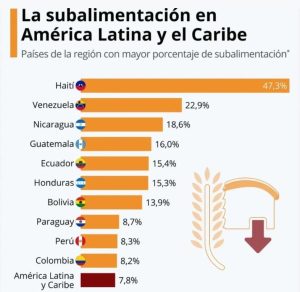Two ways to improve your gut health that have nothing to do with what you eat - Fit&Well
- Two ways to improve your gut health that have nothing to do with what you eat Fit&Well
- How the Gut Microbiome Affects Overall Well-Being Palm Springs Life
- From Sensitivities to Spending: The New Mindset Fueling Health Innovation leger360.com
- An overview of basic pathophysiological interactions between gut bacteria and their host Frontiers
- 5 Things You Should Do Every Day for Your Gut Health, According to a Gastroenterologist EatingWell
3 days 6 hours ago
Undernourishment in the Dominican Republic drops to 3.6%, FAO reports
3 days 23 hours ago
Health, Food and Agriculture Organization (FAO), undernourishment, United Nations’ Sustainable Development Goal of “Zero Hunger”
Lawfully Present Immigrants Help Stabilize ACA Plans. Why Does the GOP Want Them Out?
4 days 2 hours ago
Asking Never Hurts, california, Health Care Costs, Insurance, States, Immigrants, Legislation, Maryland, Massachusetts, Obamacare Plans, Trump Administration
The 'cancer souvenir' that impacts millions - Deseret News
- The 'cancer souvenir' that impacts millions Deseret News
- ‘Supermicrosurgery’ offers path to preventing lymphedema in breast cancer patients thegazette.com
- THE RIGHT WAY TO CARE: Understanding edema and lymphedema lockportjournal.com
4 days 12 hours ago
Dominican Society of Spine Surgery concludes Ninth Congress in Punta Cana
4 days 20 hours ago
Health
Sandals Resorts awarded CARPHA’s highest health and safety honour
4 days 21 hours ago
Business, Health, PRESS RELEASE, Travel/Tourism, caribbean hotel and tourism association, caribbean public health agency, caribbean tourism organisation, carpha, chta, cto, global tourism resilience and crisis management centre, gtrcmc, healthier safer tourism award, hst, jeremy jones, lisa indar, sandals resorts
WHO urges action on hepatitis, announcing hepatitis D as carcinogenic - World Health Organization (WHO)
- WHO urges action on hepatitis, announcing hepatitis D as carcinogenic World Health Organization (WHO)
- It's called the 'silent' infection. When was the last time you were tested? WLTX
- Millions in Europe unknowingly living with hepatitis, officials warn Euronews.com
- AbbVie, Gilead and GSK back World Hepatitis Day, seeking to tackle stigma to drive elimination Fierce Pharma
- How to put an end to Hepatitis B India Today
4 days 22 hours ago
I Swapped 10,000 Steps A Day For 30 Minutes Of 'Japanese Walking' – I've Never Been More Active - HuffPost UK
- I Swapped 10,000 Steps A Day For 30 Minutes Of 'Japanese Walking' – I've Never Been More Active HuffPost UK
- What Experts Think About the Japanese Walking Trend Time Magazine
- Japanese Walking Is Taking Over Social Media—Here’s Why Experts Say It's Surprisingly Effective Oprah Daily
- What is a micro-walk? The fad may be the simple trick to make you healthier The Independent
- Simple Japanese fitness trend could add 7 years to life expectancy, experts say Fox News
5 days 2 hours ago
Opinion: What I learned by going off SSRIs after nearly a decade
5 days 3 hours ago
First Opinion, Health, Mental Health, policy
US scientists discover new early warning sign for deadly pancreatic cancer - The Times of India
- US scientists discover new early warning sign for deadly pancreatic cancer The Times of India
- New link found between cellular stress and aggressive pancreatic cancer News-Medical
- Stress and inflammation key to spotting pancreatic cancer before it turns fatal, says US study Moneycontrol
- Early Warning Sign for One of the Most Lethal Cancers Discovered Newsweek
- Breakthrough in Understanding Pancreatic Cancer Progression Through Cellular Stress Response Lab Manager
5 days 10 hours ago
Strokes: the second leading cause of death and the leading cause of disability in the country
5 days 18 hours ago
Health, Local
Women’s health care lacks funding, research, FDA chief says - Politico
- Women’s health care lacks funding, research, FDA chief says Politico
- Doctors urge FDA to remove black box warning on hormone therapy for menopause NPR
- Black box warning on menopause hormone therapies should be removed, experts say CNN
- HRT and the FDA WNYC
- FDA commissioner stirs debate over hormone therapy for menopause The Hill
5 days 23 hours ago


